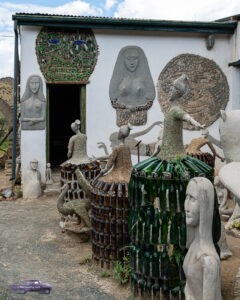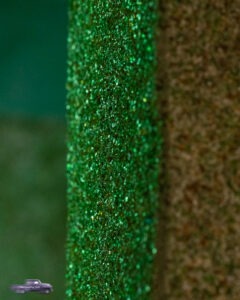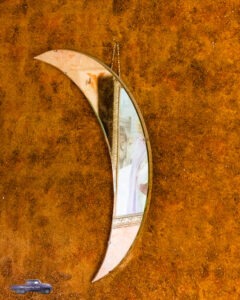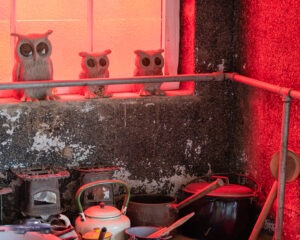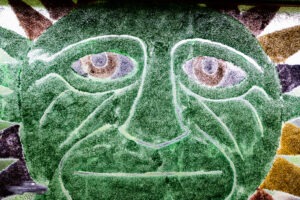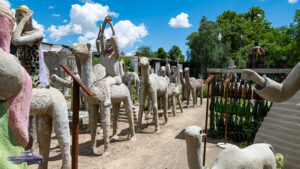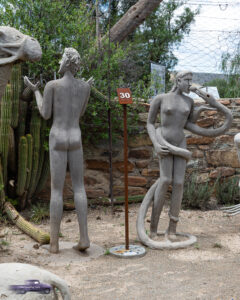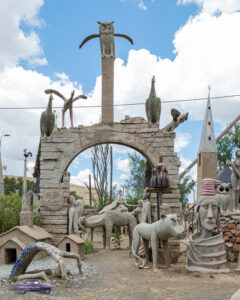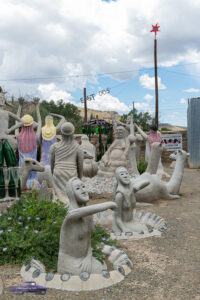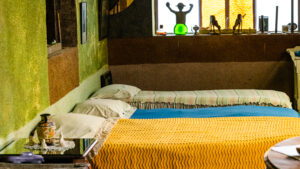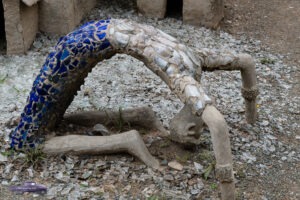The Owl House - Nieu Bethesda, Eastern Cape, RSA
Helen Martins will always be a bit of a South African enigma.
She was born on 23 December 1897, in a small Eastern Cape town, Nieu-Bethesda, the youngest of six surviving children of Pieter and Hester Martins. She was schooled in the neighbouring Graaf-Reinet and also obtained her teaching diploma at the teachers' college in the same town.
She started teaching in the Transvaal in 1919 and a year later married a colleague, Willem Johannes Pienaar, who shared her involvement in acting and theatre productions. The couple travelled countrywide acting in various productions, however, the marriage was rocky, and they divorced in 1926, amidst rumours of infidelity.
Being newly single, and the only one of the surviving children to be so, the onus fell on Helen to return to Nieu-Bethesda around 1927 or 1928, to care for her elderly and ailing parents. Her mother passed away in 1941 and her father in 1945. It has been reported that she had a stormy relationship with her domineering father and after his death, she turned his outside room into the “Lion’s Den”, bricking up the windows and painting the entire inside of the room black.
Her parents left Helen the house. Left alone, she became increasingly reclusive and isolated from the local, mostly strictly Calvinistic, community. “Miss Helen” was seen as an eccentric and peculiar character, causing strained relationships with the other inhabitants of the village. With no real prospects, she started to stamp her visionary personality on her property, starting with the house. She employed locals, Jonas Adams and Piet van der Merwe, to make structural alterations. She started covering the interior walls and ceilings with ground up glass and colourful paint, possibly trying to brighten up her surroundings and life. The effect of the reflection off the glass-covered surfaces was further enhanced by strategically placing mirrors, shaped like crescent moons, stars and hearts, and using candle- and lamplight. She also replaced the window glass in some rooms with coloured glass.
Helen started experimenting with cement and wire, making sculptures for the house and later the garden, helped by her lover, Johannes Hattingh, in the early years. She was described as a passionate person who became very animated and excited when discussing ideas for her creations.
In 1964 Koos Malgas, a local from the Coloured community, started helping her. He was instrumental in the creation of the area outside, called the “Camel Yard”. This relationship was collaborative, and the creations were the result of the joining of minds and visions.
Inspiration was taken from biblical texts, the works of Omar Khayyam and William Blake. The sculptures in the yard eventually grew to more than 300, many of them fanciful interpretations of texts, folklore and legends that grabbed Helen’s attention. Mecca and the Orient also feature as source of inspiration to create a space that Helen called “My World”.
Relationships between her and the community she lived in were complicated and often strained. A 1957 marriage to J.J.M. Niemand, a pensioner and furniture restorer in the village, lasted only three months.
Her neighbours may have been suspicious of the relationship between Koos Malgas and Helen, in the light of their ethnic difference and the fact that she formed close relationship with the coloured community. However, there are also hints that she did invite the community to view her house and that they, in turn, assisted with meals when they saw that she was not eating properly.
Exposure to the fine crushed glass eventually caused damage to her eyesight. She grew increasingly depressed and attempted suicide by taking caustic soda. She was found and taken to hospital but died two days later, on 8 August 1976.
It was her wish that her creation be preserved as a museum. She was finally recognised as an artist in the attention received by the Owl House. As aptly stated on https://oudepastorie.com/helen-martins-and-the-owl-house/, her artwork, once an object of derision and embarrassment, has become the single most important asset of the village of Nieu-Bethesda. This supreme example of outside art was declared a National Heritage Site of South Africa in 2017.
https://en.wikipedia.org/wiki/The_Owl_House_(museum)


